Cover
Copyright
Packt upsell
Contributors
Table of Contents
Preface
Chapter 1 - Anyone Can Be a User Experience (UX) Professional
Chapter 2 - Don't Use More Than Two Typefaces
Chapter 3 - Users Already Have Fonts on Their Computers, So Use Them
Chapter 4 - Use Type Size to Depict Information Hierarchy
Chapter 5 - Use a Sensible Default Size for Body Copy
Chapter 6 - Use an Ellipsis to Indicate That There's a Further Step
Chapter 7 - Make Your Buttons Look Like Buttons
Chapter 8 - Make Buttons a Sensible Size and Group Them Together by Function
Chapter 9 - Make the Whole Button Clickable, Not Just the Text
Chapter 10 - Don't Invent New, Arbitrary Controls
Chapter 11 - Search Should be a Text Field with a Button Labeled "Search"
Chapter 12 - Sliders Should Be Used Only for Non-Quantifiable Values
Chapter 13 - Use Numeric Entry Fields for Precise Integers
Chapter 14 - Don't Use a
Drop-Down Menu
If You Only Have
a Few Options
Chapter 15 - Allow Users to Undo Destructive Actions
Chapter 16 - Think About What's Just off the Screen
Chapter 17 - Use "Infinite Scroll" for Feed–Style Content Only
Chapter 18 - If Your Content Has a Beginning, Middle, and End, Use Pagination
Chapter 19 - If You Must Use Infinite Scroll, Store the User's Position and Return to It
Chapter 20 - Make "Blank Slates" More Than Just Empty Views
Chapter 21 - Make "Getting Started" Tips Easily Dismissable
Chapter 22 - When a User Refreshes a Feed, Move Them to the Last Unread Item
Chapter 23 - Don't Hide Items Away in a "Hamburger" Menu
Chapter 24 - Make Your Links Look Like Links
Chapter 25 - Split Menu Items Down into Subsections, so Users Don't Have to Remember Large Lists
Chapter 26 - Hide "Advanced" Settings From Most Users
Chapter 27 - Repeat Menu Items in the Footer or Lower Down in the View
Chapter 28 - Use Consistent Icons Across the Product
Chapter 29 - Don't Use Obsolete Icons
Chapter 30 - Don't Try to Depict a New Idea With an Existing Icon
Chapter 31 - Never Use Text on Icons
Chapter 32 - Always Give
Icons a Text Label
Chapter 33 - Emoji are the Most Recognized Icon Set on Earth
Chapter 34 - Use Device-Native Input Features Where Possible
Chapter 35 - Obfuscate Passwords in Fields, but Provide a "Show Password" Toggle
Chapter 36 - Always Allow the User to Paste into Password Fields
Chapter 37 - Don't Attempt to Validate Email Addresses
Chapter 38 - Don't Ever Clear User-Entered Data Unless Specifically Asked To
Chapter 39 - Pick a Sensible Size for Multiline Input Fields
Chapter 40 - Don't Ever Make Your UI Move While a User is Trying to Use It
Chapter 41 - Use the Same Date Picker Controls Consistently
Chapter 42 - Pre-fill the Username in "Forgot Password" Fields
Chapter 43 - Be Case-Insensitive
Chapter 44 - If a Good Form Experience Can Be Delivered, Your Users will Love Your Product
Chapter 45 - Validate Data Entry as Soon as Possible
Chapter 46 - If the Form Fails Validation, Show the User Which Field Needs Their Attention
Chapter 47 - Be Forgiving – Users Don't Know (and Don't Care) How You Need the Data
Chapter 48 - Pick the Right Control for the Job
Chapter 49 - Allow Users to Enter Phone Numbers However They Wish
Chapter 50 - Use Drop Downs Sensibly for Date Entry
Chapter 51 - Capture the Bare Minimum When Requesting Payment Card Details
Chapter 52 - Make it Easy for Users to Enter Postal or ZIP Codes
Chapter 53 - Don't Add Decimal Places to Currency Input
Chapter 54 - Make it Painless for the User to Add Images
Chapter 55 - Use a "Linear" Progress Bar if a Task will Take a Determinate Amount of Time
Chapter 56 - Show a "Spinner" if the Task Will Take an Indeterminate Amount of Time
Chapter 57 - Never Show an Animated, Looping Progress Bar
Chapter 58 - Show a Numeric Progress Indicator on the Progress Bar
Chapter 59 - Contrast Ratios Are Your Friends
Chapter 60 - If You Must Use "Flat Design" then Add Some Visual Affordances to Controls
Chapter 61 - Avoid Ambiguous Symbols
Chapter 62 - Make Links Make Sense Out of Context
Chapter 63 - Add "Skip to Content" Links Above the Header and Navigation
Chapter 64 - Don't Only Use Color to Convey Information
Chapter 65 - If You Turn Off Device Zoom with a Meta Tag, You're Evil
Chapter 66 - Give Navigation Elements a Logical Tab Order
Chapter 67 - Write Clear Labels for Controls
Chapter 68 - Let Users Turn off Specific Notifications
Chapter 69 - Make Tappable Areas Finger-Sized
Chapter 70 - A User's Journey Should Have a Beginning, Middle, and End
Chapter 71 - The User Should Always Know at What Stage They Are in Any Given Journey
Chapter 72 - Use Breadcrumb Navigation
Chapter 73 - If the User is on an Optional Journey, Give Them a Control to "Skip This"
Chapter 74 - Users Don't Care About Your Company
Chapter 75 - Follow the Standard E-Commerce Pattern
Chapter 76 - Show an Indicator in the Title Bar if the User's Work is Unsaved
Chapter 77 - Don't Nag Your Users into Rating Your App
Chapter 78 - Don't Use a Vanity Splash Screen
Chapter 79 - Make Your
Favicon
Distinctive
Chapter 80 - Add a "Create from Existing" Flow
Chapter 81 - Make it Easy for Users to Pay You
Chapter 82 - Categorize Search Results into Sections
Chapter 83 - Your Users Probably Don't Understand the File System
Chapter 84 - Show, Don't Tell
Chapter 85 - Be Consistent with Terminology
Chapter 86 - Use "Sign in" and "Sign out", Not "Log in" and "Log out"
Chapter 87 - "Sign up" Makes More Sense Than "Register"
Chapter 88 - Use "Forgot Password" or "Forgotten Your Password", Not Something Obscure
Chapter 89 - Write Like
a Human Being
Chapter 90 - Choose Active Verbs over Passive
Chapter 91 - Search Results Pages Should Show the Most Relevant Result at the Top of the Page
Chapter 92 - Pick Good Defaults
Chapter 93 - Don't Confound Users' Expectations
Chapter 94 - Reduce the Number of Tasks a User Has to Complete by Using Sensible Defaults
Chapter 95 - Build Upon Established Metaphors –
It's Not Stealing
Chapter 96 - Decide Whether an Interaction Should Be Obvious, Easy, or Possible
Chapter 97 - "Does it Work on Mobile?" is Obsolete
Chapter 98 - Messaging is a
Solved Problem
Chapter 99 - Brands Are Bullshit
Chapter 100 - Don't Join the Dark Side
Chapter 101 - Test with Real Users
Bonus – Strive for Simplicity
Other Books
You May Enjoy

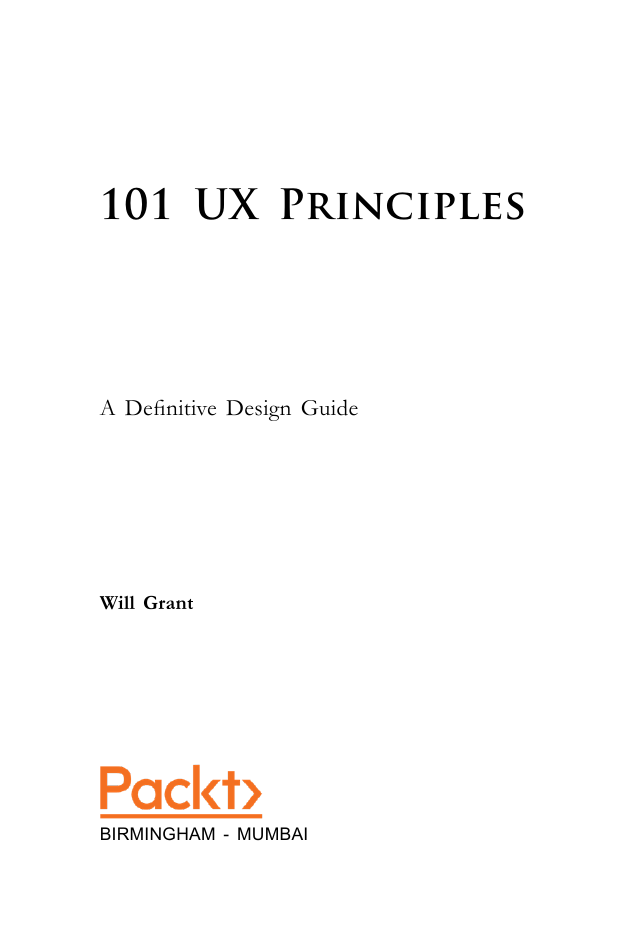
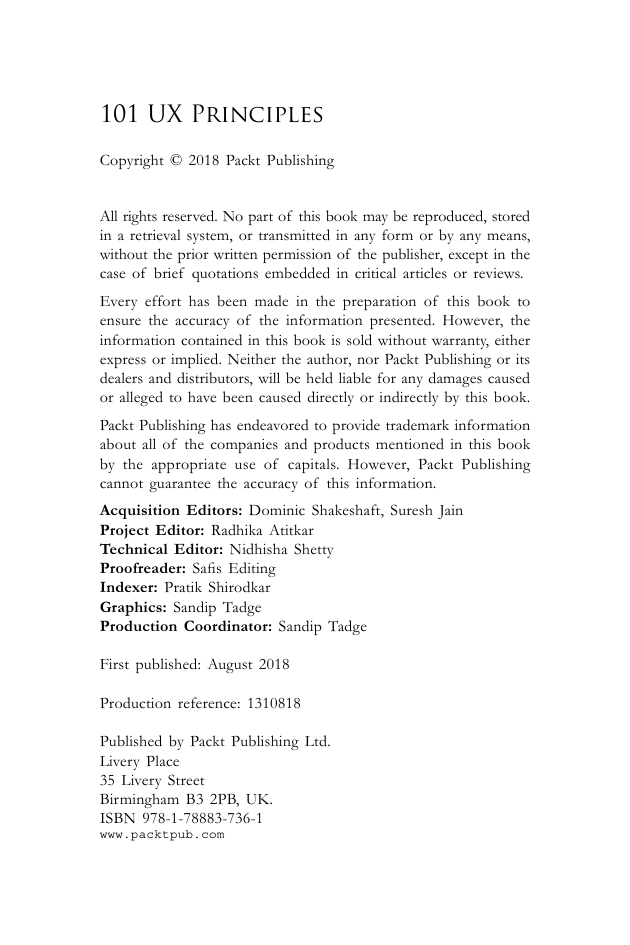
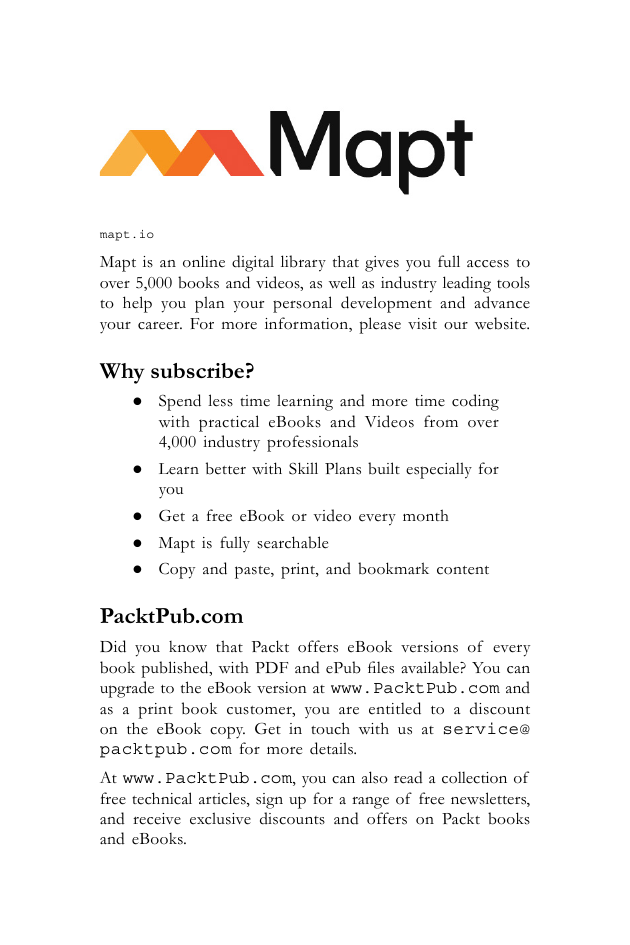
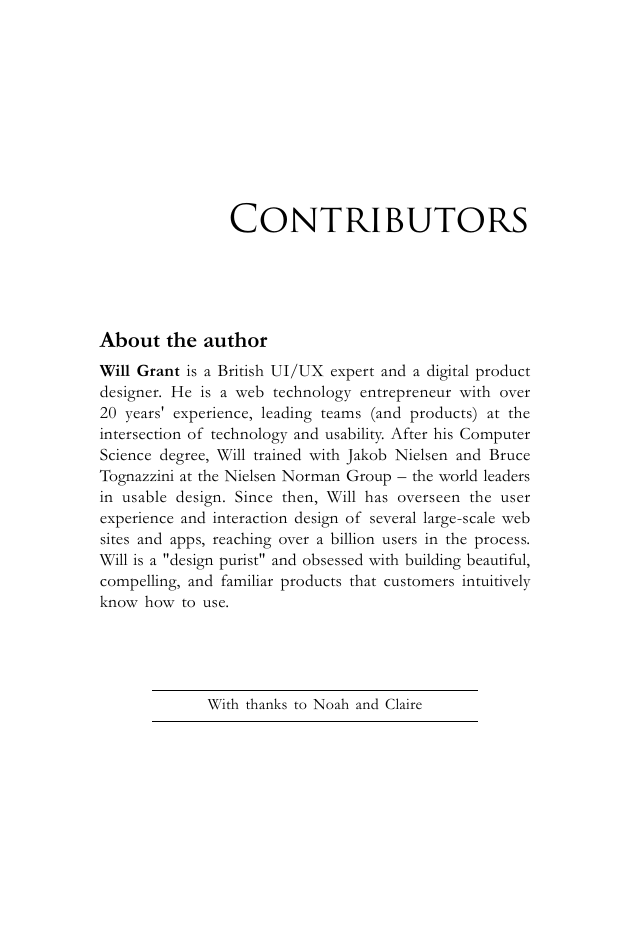
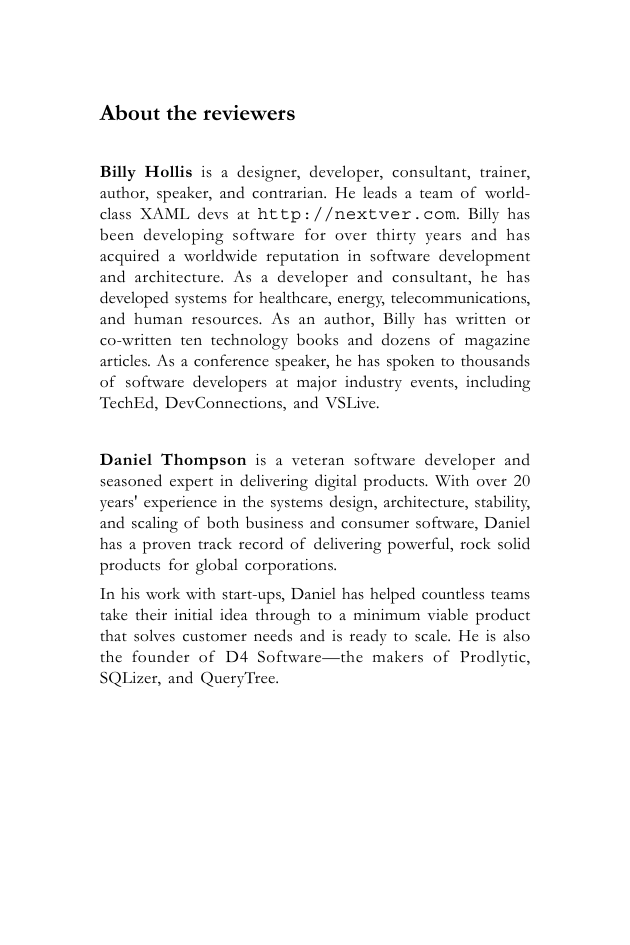
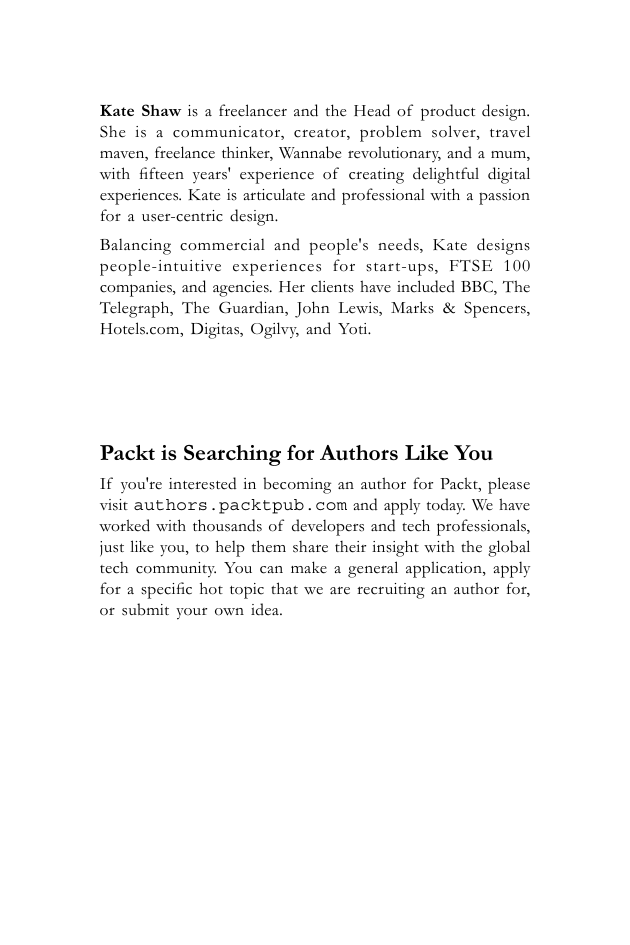









 2023年江西萍乡中考道德与法治真题及答案.doc
2023年江西萍乡中考道德与法治真题及答案.doc 2012年重庆南川中考生物真题及答案.doc
2012年重庆南川中考生物真题及答案.doc 2013年江西师范大学地理学综合及文艺理论基础考研真题.doc
2013年江西师范大学地理学综合及文艺理论基础考研真题.doc 2020年四川甘孜小升初语文真题及答案I卷.doc
2020年四川甘孜小升初语文真题及答案I卷.doc 2020年注册岩土工程师专业基础考试真题及答案.doc
2020年注册岩土工程师专业基础考试真题及答案.doc 2023-2024学年福建省厦门市九年级上学期数学月考试题及答案.doc
2023-2024学年福建省厦门市九年级上学期数学月考试题及答案.doc 2021-2022学年辽宁省沈阳市大东区九年级上学期语文期末试题及答案.doc
2021-2022学年辽宁省沈阳市大东区九年级上学期语文期末试题及答案.doc 2022-2023学年北京东城区初三第一学期物理期末试卷及答案.doc
2022-2023学年北京东城区初三第一学期物理期末试卷及答案.doc 2018上半年江西教师资格初中地理学科知识与教学能力真题及答案.doc
2018上半年江西教师资格初中地理学科知识与教学能力真题及答案.doc 2012年河北国家公务员申论考试真题及答案-省级.doc
2012年河北国家公务员申论考试真题及答案-省级.doc 2020-2021学年江苏省扬州市江都区邵樊片九年级上学期数学第一次质量检测试题及答案.doc
2020-2021学年江苏省扬州市江都区邵樊片九年级上学期数学第一次质量检测试题及答案.doc 2022下半年黑龙江教师资格证中学综合素质真题及答案.doc
2022下半年黑龙江教师资格证中学综合素质真题及答案.doc